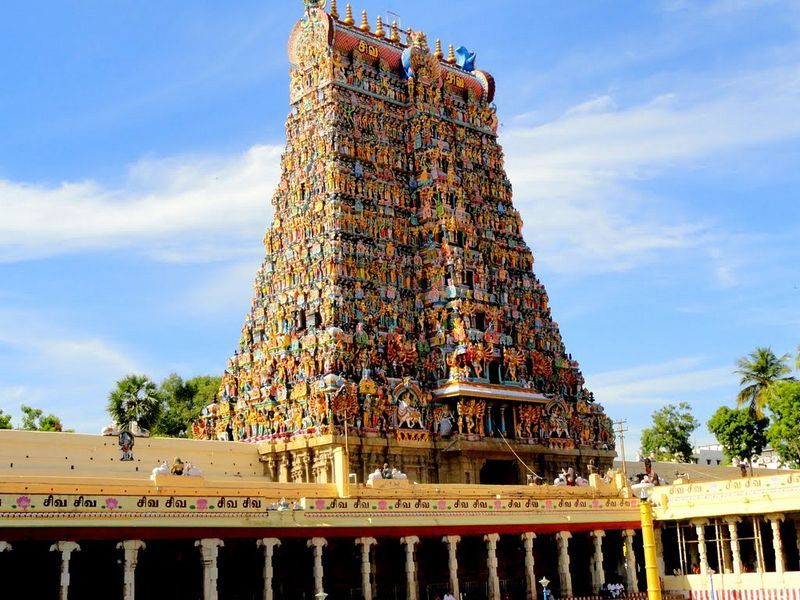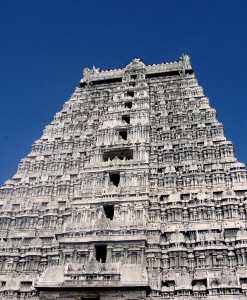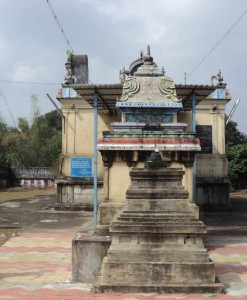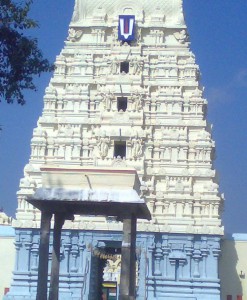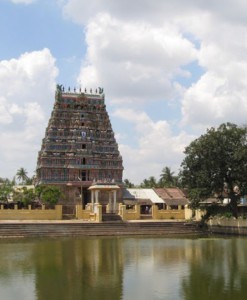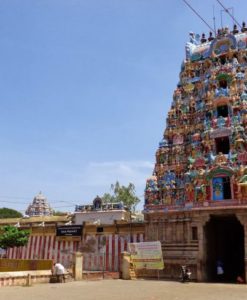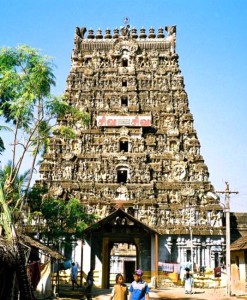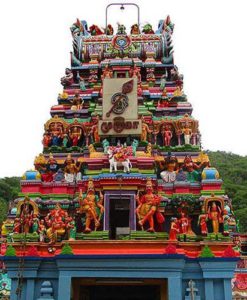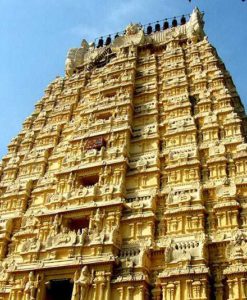No products in the cart.
If Tamil Nadu is the seat of South Indian temple architecture, the Madurai Meenakshi Amman Temple is its crowning glory. The temple structure with its concentric squares and high walled enclosures is a lesson for students of architecture. The temple is square shaped and a series of concentric streets with names from Tamil months surround the structure. The entire temple occupies around 45 acres, with each side having an entrance of its own. Madurai Meenakshi temple’s history is as old as the history of the city itself.
Meenakshi Amman temple, Madurai
The history of Madurai dates back thousands of years- almost to 6th century B.C. It was a key commercial center for the Pandya dynasty that ruled the place. The temple is said to have been constructed somewhere around this time by Kulashekara Pandyan. There’s a lot of myth around the temple. It is important to know more about these stories before appreciating the temple’s modern history.
Legend has it that the reigning deity Meenakshi was born out of holy fire as an answer to the prayers of King Malayadwaja and his wife Kanchanamalai. She married Lord Shiva and both ruled the city of Madurai as Lord Sundareshwar and Goddess Meenakshi. It is also believed that Lord Indra founded the temple when he found a suyambu lingam. There’s also mention about the temple in ancient Tamil literature through.
It is said that Lord Vishnu, Meenakshi’s brother travelled all the way from Srivaikuntam- his abode to witness the marriage. But he couldn’t make it on time and the marriage was solemnized without his presence. Angered by this insult, he vowed never to enter Madurai and settled in nearby Azaghar Kovil. He was later convinced and to this day, his pacification is celebrated as Azhaghar Thiruvila.
The temple is the geographic and ritual center of the ancient city of Madurai and one of the largest temple complexes in Tamil Nadu. The temple complex is divided into a number of concentric quadrangular enclosures contained by high masonry walls. It is one of the few temples in Tamil Nadu to have four entrances facing four directions. Vishwantha Nayaka allegedly redesigned the city of Madurai in accordance with the principles laid down by Shilpa Shastras relevant to urban planning. The city was laid out in the shape of square with a series of concentric streets culminating from the temple. These squares continue to retain their traditional names, Aadi, Chittirai, Avani-moola and Masi streets, corresponding to Tamil month names. Ancient Tamil classics mention that the temple was the center of the city and the streets happened to be radiating out like lotus and its petals. The temple prakarams (outer precincts of a temple) and streets accommodate an elobrate festival calendar in which dramatic processions circumabulate the shrines at varying distances from the centre. The vehicles used in processions are progressively more massive the further they travel from the centre. The complex is in around 45 acres (180,000 m2)
There are daily flights to Madurai from Chennai, Bangalore,Tiruchi & Coimbatore. Madurai Airport is 10 Kms away from Madurai City.
Madurai is an important railway junction of the Southern Railway and is directly connected to Chennai and Tirunelveli. Madurai is on the Madurai-Tiruchirappalli-Dindigul-Quilon line. The Vaigai Express, which is a super-fast day train between Chennai Egmore and Madurai takes 7 hours for the 495kms.
There are excellent roads connecting Madurai to all parts of South India. Madurai City has 5 Major Bus Stand.
The temple is open from 5am to 10pm.
Some of the major festivals celebrated annually include Ram Navmi, Janmashtami, Shivratri, Holi, Ganesh Chaturthi and Diwali. Marking the Hindu New Year, Diwali is one of the grandest Hindu festivals, and attracts many visitors and devotees to the mandir.

